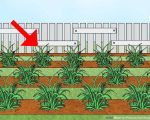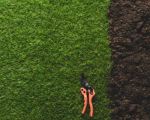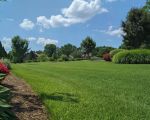How to Plant Native Grasses for a Beautiful, Low-Maintenance Landscape
When I first decided to transform my garden into a more sustainable and eco-friendly space, one of the best decisions I made was to plant native grasses. Native grasses are a fantastic option for creating a beautiful, low-maintenance landscape while supporting local ecosystems. As I started researching how to plant them, I quickly realized there are several important steps and considerations to ensure success. If you're also interested in planting native grasses, this guide will walk you through the process, from selection to planting and care.
1. Why Choose Native Grasses for Your Garden?
Native grasses are naturally adapted to the climate and soil conditions of your region, making them easier to grow and more resilient than non-native plants. By choosing native grasses, you're not only contributing to environmental conservation but also creating a habitat for local wildlife. These grasses require less water, fertilizer, and maintenance compared to traditional lawn grasses, which can save you time and money in the long run.
When I planted my first batch of native grasses, I was amazed at how quickly they adapted to the local environment. Unlike the typical non-native varieties I had previously tried, native grasses thrived with minimal care, and their natural beauty added a unique charm to my garden. Plus, I was able to cut back on water usage—something that's become especially important in recent years with the growing concern over water conservation.
2. Selecting the Right Native Grasses
Choosing the right type of native grass for your area is the first step in creating a successful garden. There are numerous species of native grasses, and each one has specific growth requirements and characteristics. Some of the most common native grasses in the United States include:
- Big Bluestem: Known for its tall stature and vibrant blue-green foliage, Big Bluestem is perfect for creating a striking focal point in your garden.
- Little Bluestem: This compact grass adds a graceful touch to any garden, with its silvery-blue leaves and rust-colored fall hues.
- Switchgrass: With its dense, upright form, Switchgrass is an excellent choice for creating a natural privacy screen or adding texture to your landscape.
- Indian Grass: A versatile grass with golden-yellow flowers that attract pollinators, Indian Grass is ideal for prairie-style gardens.
Before you plant, take some time to research the native grasses that thrive in your specific region. Local nurseries or extension services are great resources for information on the best species for your area. I found it helpful to visit a local botanical garden, where I could see the grasses in action and learn about their growth habits firsthand.
3. Preparing the Soil for Native Grass Planting
One of the key factors in successfully planting native grasses is preparing your soil properly. While native grasses are generally adaptable to different soil types, they do best in well-drained, nutrient-poor soil. The first thing I did was remove any existing lawn grasses or weeds, which would compete with the new grasses for nutrients and water. This can be done by digging up the area or using a non-toxic herbicide.
Next, I lightly tilled the soil to a depth of about 2 to 3 inches. This helps loosen the soil and creates a better environment for seed germination. Native grasses typically prefer soils with low fertility, so I avoided adding fertilizers or rich compost to the planting area. If your soil is heavy clay or overly compacted, consider adding sand or organic matter to improve drainage.
4. Planting Native Grasses
Once your soil is prepared, it’s time to plant the native grasses. I opted for a mix of grass seeds to create a more diverse and natural-looking landscape. You can either sow the seeds by hand or use a broadcast spreader for larger areas. It’s important to follow the recommended seed rate for your chosen species, as this will affect the overall density and appearance of your grassland.
I gently pressed the seeds into the soil with a light raking or rolling, ensuring that they had good soil-to-seed contact. For optimal results, I planted the seeds in the early spring or fall, as these seasons provide the ideal conditions for germination. I made sure to water the seeds lightly after planting, but not too much, as native grasses prefer to be on the drier side compared to other types of grass.
5. Caring for Your Native Grass Garden
Once your native grasses are planted, the maintenance required is minimal compared to traditional lawns. However, there are a few key steps to ensure they grow strong and healthy:
- Watering: Native grasses are drought-tolerant and typically require very little water once established. During the first few weeks after planting, water them regularly to help with germination. After that, you can reduce watering significantly.
- Weed Control: Native grasses grow slowly, so you may need to monitor the area for weeds. I used organic mulch around my grasses to keep weeds at bay without using chemicals.
- Mowing: Once the grasses have matured, they require little to no mowing. I occasionally mow my grassland once a year in late winter to help clear out any dead growth and make way for new shoots in the spring.
Taking the time to care for my native grasses has truly paid off. Over the seasons, they’ve established a beautiful, natural look that requires very little maintenance beyond occasional mowing. The best part? My garden now provides a habitat for birds, pollinators, and other wildlife, adding another layer of enjoyment and sustainability to my landscape.
6. The Benefits of a Native Grass Landscape
There are numerous benefits to planting native grasses in your garden. Not only do they contribute to local biodiversity, but they also help conserve water, reduce pollution, and lower the need for chemical fertilizers and pesticides. Additionally, native grasses can improve soil health by preventing erosion and enhancing soil structure.
After experiencing the transformation in my own garden, I wholeheartedly recommend planting native grasses to anyone looking to create a more sustainable landscape. The ease of care, beauty, and environmental benefits are unparalleled. Whether you're a seasoned gardener or just starting out, native grasses are a rewarding addition to any outdoor space.








